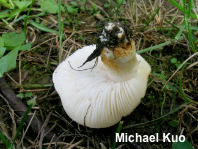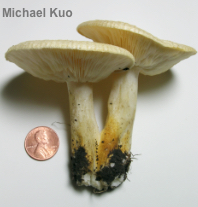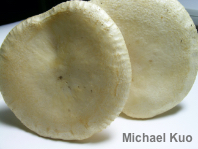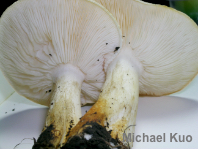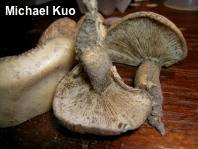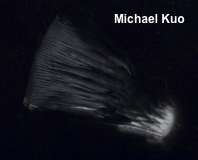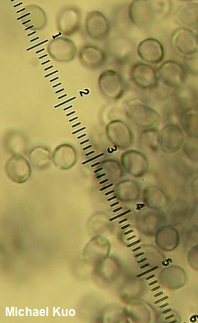| Major Groups > Gilled Mushrooms > Pale-Spored > Pogonoloma spinulosum |

|
Pogonoloma spinulosum [ Basidiomycota > Agaricales > Tricholomataceae > Pogonoloma . . . ] by Michael Kuo Pogonoloma spinulosum looks a lot like a species of Tricholoma—but it is a saprobe (Tricholoma species are mycorrhizal), capable of growing in places where there are no associated mycorrhizal trees, and it has amyloid spores (Tricholoma spores are inamyloid). The odor of this species is strong and distinctive, though hard to describe: fragrant and foul, reminiscent of some of the odors in Inocybe. Other identifying features include the orangish-staining stem, the whitish gills and spore print, and the cap surface, which is fairly bald centrally but becomes finely fibrillose at the margin, giving the cap edge a ciliate or spinulose appearance (hence the species epithet spinulosum). Pogonoloma spinulosum is a rare European species, documented in North America for what is apparently the first time, here. Now I wish I had slowed down to take better photos the three times I've collected this thing! Previous names include Tricholoma spinulosum, Leucopaxillus spinulosus, and Porpoloma spinulosum. Description: Ecology: Saprobic; growing alone, scattered, or gregariously in hardwood forests or in urban grassy areas; fall; rare in northern and temperate Europe; very rare in North America. The illustrated and described collections are from Illinois. Cap: 5–8 cm across; at first convex, becoming broadly convex to nearly flat; dry; bald over the center, but finely radially fibrillose toward the margin; the margin slightly tucked under, becoming shallowly, widely lined; dull orangish cream to pale tan. Gills: Attached to the stem by a notch; close; short-gills frequent; whitish. Stem: 2.5–6.5 cm long; 1–2 cm thick; equal; bald or finely silky; dry; whitish to pale tan or dull orangish, staining orangish to orange-brown with handling or in age, especially toward the base; basal mycelium white. Flesh: White; unchanging when sliced. Odor and Taste: Odor strong and a little unpleasant (hard to describe; not mealy, but sub-spermatic and fragrant). Taste similar. Chemical Reactions: KOH negative to orangish on cap surface. Spore Print: White. Microscopic Features: Spores 3.5–5 x 3–4 µm; widely ellipsoid or nearly subglobose; smooth; hyaline in KOH; amyloid. Lamellar trama parallel. Basidia 4-sterigmate. Cystidia not found. Pileipellis a cutis; elements 4–12 µm wide, smooth, hyaline in KOH. Clamp connections present. REFERENCES: (Kühner & Romagnesi, 1947) M. Sánchez-García, 2014. (Arnolds & Noordeloos, 1999; Buczacki et al., 2012; Sánchez-García et al., 2014; Vesterholt, 2018; Læssøe & Petersen, 2019.) Herb. Kuo 09220601, 09091201, 09151201. This site contains no information about the edibility or toxicity of mushrooms. |
© MushroomExpert.Com |
|
Cite this page as: Kuo, M. (2019, December). Pogonoloma spinulosum. Retrieved from the MushroomExpert.Com Web site: http://www.mushroomexpert.com/pogonoloma_spinulosum.html |
